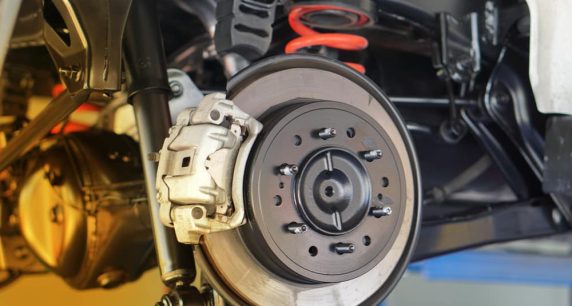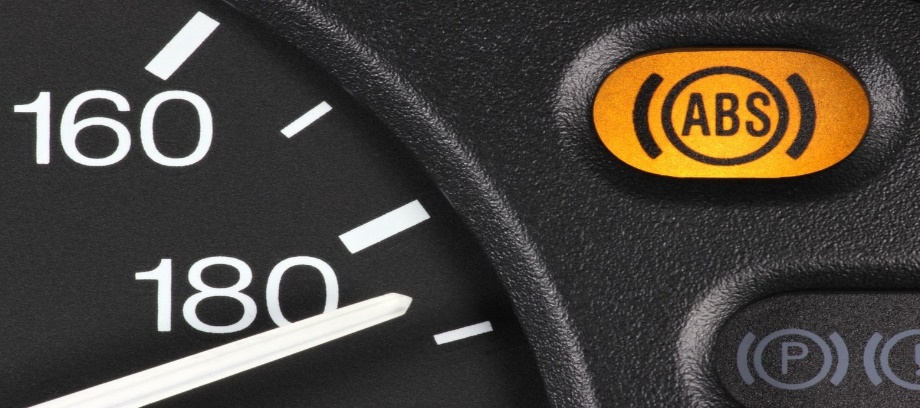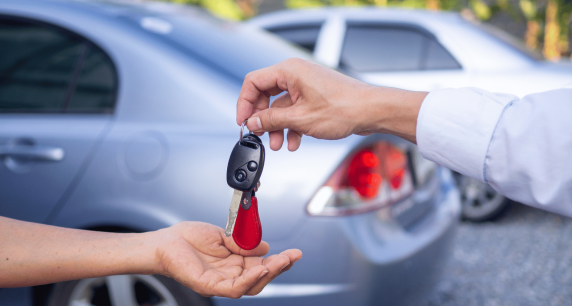What are Anti-Lock Braking Systems (ABS)

Commonly known as ABS, or sometimes anti-skid braking systems, anti-lock braking systems help prevent car and motorcycle wheels locking up and improve steering control whilst braking.
The first primitive form of ABS was developed in the 1920’s by French pioneer Gabriel Voisin, initially to aid braking on aircraft. Although, it wasn’t until the 1970’s that ABS was adapted and introduced to the commercial vehicle market on a large scale.
Today, anti-lock braking is now standard on virtually all new cars and motorcycles and is used not only to aid steering whilst braking but also to help with traction control.
The four major components of a typical anti-lock braking system are:
- Speed sensors – These sensors monitor how fast the wheel or wheels are rotating
- Valves – Valves in the brake line allow, block and release pressure on the brakes by assuming three different positions
- Pump – These pumps are filled with hydraulic fluid and apply pressure to the brake drums or calipers on demand
- Controller – The electronic control unit (ECU) is the brain of the ABS and uses data from the sensors to determine whether or not to pump the brakes
HOW DOES THE ANTI-LOCK BRAKING SYSTEM WORK?
ABS works by releasing and then reapplying or ‘pumping’ the brakes to a motorcycle wheel or car wheels in heavy braking situations. Sensors on each wheel are used to detect ‘locking’ or when a wheel stops moving and starts to skid. Although not all ABS systems are the same, with some only preventing wheels on the rear axle from locking up. When a lock-up is detected, ABS pumps the brakes, 100’s of times a second. This stops the wheel or wheels from skidding and helps keep the driver in control of the vehicle. So essentially, ABS works in three stages:
- Brake pedal is pushed
- Wheel sensors detect skidding or ‘locking’
- ABS pumps the brakes

DOES ABS HELP ME STOP FASTER?
The primary purpose of ABS is not actually to help cars stop faster. But to help drivers maintain control of their vehicles in heavy braking situations. In ideal conditions vehicles equipped with ABS generally experience shorter stopping distances than those without. Decreased stopping distance is not guaranteed by ABS and is a secondary effect.

HOW DOES ABS BENEFIT RACING DRIVERS?
In the racing world driver aids such as ABS and traction control systems (TCS) take on different roles. ABS can be used to change when a driver commits to braking before a corner and can also help protect tires from excessive wear.
ABS IN ADVERSE WEATHER CONDITIONS
ABS has been proven to reduce the risk of crashing when being used on typical road surfaces like bitumen and concrete. But the results are quite different on surfaces like snow, ice and gravel, where braking distances are actually increased. On snow, a wheel that skids or locks will build up a wedge of snow helps vehicles stop. Whereas ABS would detect the locking of a wheel and attempt to stop any skidding or locking from occurring.
Similarly, on the ice, ABS can be more of a hindrance than a benefit because of system limitations. ABS works by detecting and comparing locking on individual wheels. Meaning a car or motorcycle that experiences locking on all wheels simultaneously wouldn’t trigger ABS. In the event that ABS fails, drivers should pump the brakes manually.
ABS AS TRACTION CONTROL
ABS is also used as a form of traction control in a range of modern cars. ABS is used to help restore grip to wheels that slip, by slightly applying the brake. Although this shouldn’t be confused with actual traction control systems (TCS) that are used to prevent wheel spins during acceleration.
TCS works by shifting torque through differentials to wheels that the ECU deems to have better traction in comparison with a wheel that is slipping.
ABS IN STRONG WINDS
Most modern cars are now built to be able to deal with strong crosswinds. Although motorcycles and high sided vehicles such as heavy goods vehicles are still vulnerable. Newer HGV’s are combating strong winds on the motorway by using ABS to apply the brakes to wheels and help keep lorries on the straight and narrow.
MY ‘ABS’ LIGHT IS ON – WHAT DO I DO?

If you see the ABS light appear on your dashboard, then there’s likely a problem that needs fixing. Although an illuminated ABS light doesn’t mean that your car has no brakes. But beware that you’ll no longer have the assistance of ABS when braking hard.
Your first port of call should be to check your brake fluid levels. Making sure that the reservoir is filled to the level. If you’re not comfortable with doing that, head to your local garage and a professional will get your ABS back up and running.
WHAT IF MY CAR DOESN’T HAVE ABS?
Anti-lock brakes require you to press down hard when you’re braking to avoid an obstacle. But if you don’t have an ABS equipped car or motorcycle, what you need to do is slightly different:
- Slow down as much as possible – you’ll need to slow your vehicle down as much as possible before turning the steering wheel
- Foot off the accelerator – take your foot off of the accelerator pedal and if you’re in a manual geared car, push the clutch down
- Hit the brakes – push the brakes with as much pressure as you can, until you can feel your wheel’s lock, then release the brakes
- Pump your brakes – take your foot off the brakes, then reapply the brakes, this replicates the ABS braking method




